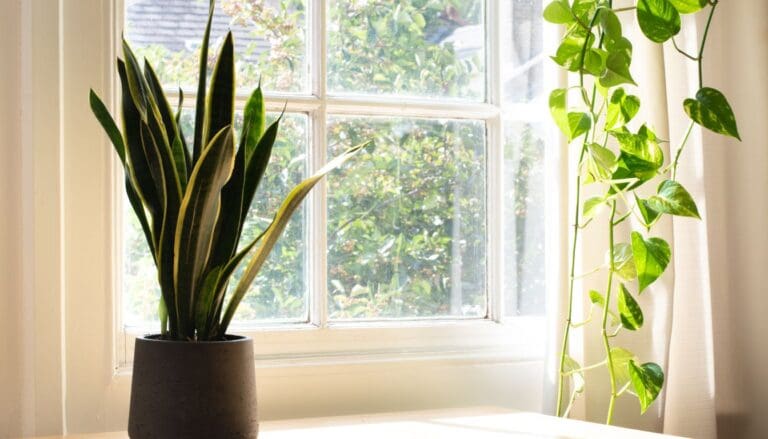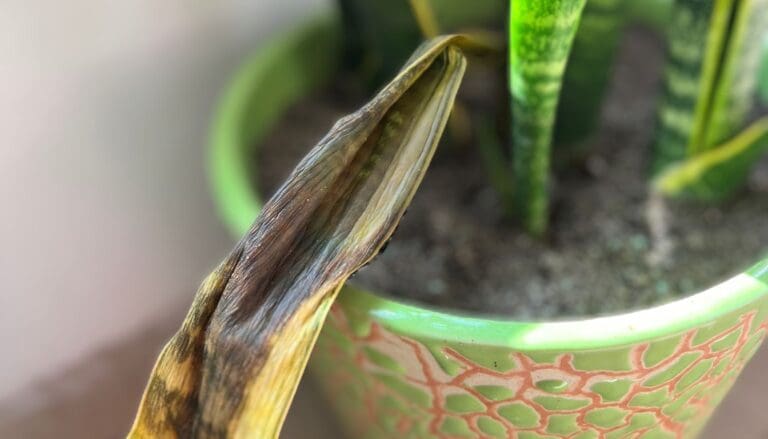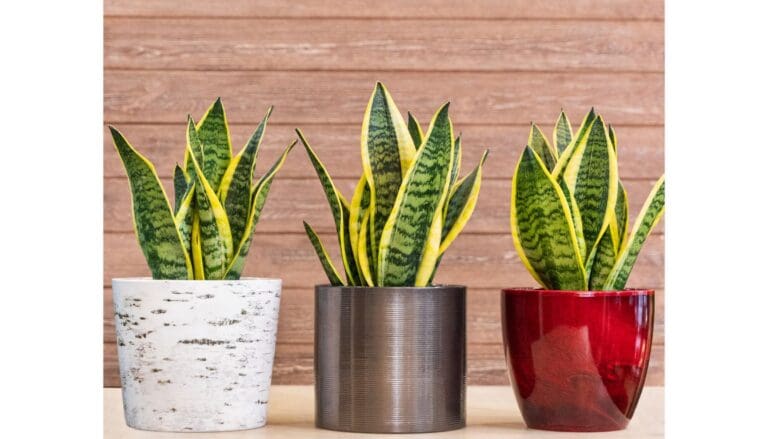7 Snake Plant Mistakes You’re Probably Making and How to Fix Them
I love having snake plants in my home. They’re easy to care for and honestly, they just look good in any room.
But even though they’re tough, I learned the hard way that a few common mistakes can keep them from thriving.
Let me share what I found so you can enjoy your own snake plant even more.
Please note: Simplify Plants is reader-supported. As an Amazon Associate, I earn from qualifying purchases made by our readers with no extra cost added to you all! Some links in the post are affiliate links and I get a commission from purchases made through links in the post.
1) Overwatering your snake plant

Overwatering is probably the most common mistake with snake plants. These guys don’t need much water at all, and too much can actually hurt their roots.
When I gave mine more water than it wanted, it got soggy. The leaves turned yellow or even mushy—yikes.
I always check the top two inches of soil with my finger. If it’s dry, that’s my cue to water; if it’s still damp, I just wait a few more days.
Watering on a set schedule never worked for me. I just keep an eye on the soil and only water when it actually needs it.
Snake plants really like to dry out between waterings. Using pots with drainage holes makes a big difference, so excess water doesn’t hang around.
Well-draining soil helps too, by the way. Overwatering can lead to root rot, and once the roots start rotting, the plant’s in trouble.
It’s honestly easier for a snake plant to bounce back from too little water than too much. I always remind myself: “When in doubt, wait it out!”
2) Placing it in low light for too long
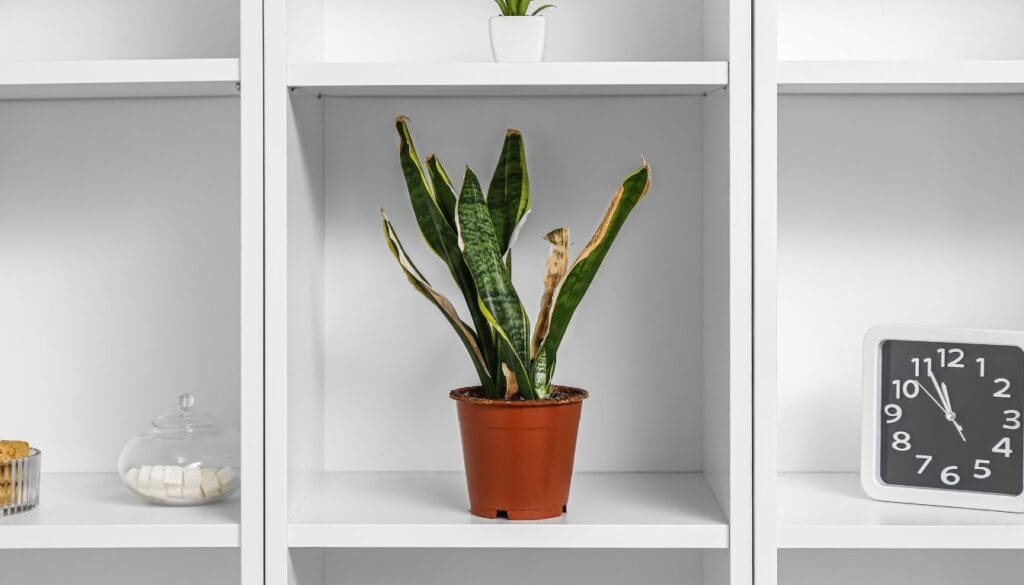
I used to think my snake plant could live anywhere—bathroom, hallway, wherever. Turns out, keeping it in low light for too long isn’t great.
Snake plants are tough, but they still want some bright, indirect light. When I left mine in a dark corner, the leaves looked weak and kind of sad.
Growth slowed way down, sometimes stopping for months. The leaves lost their color and pattern, and new ones came in smaller and paler.
They can survive in low light for a bit, but they really need a little daylight to look their best. I try to put mine near a window with some filtered sun.
If a spot is too dark for me to read, it’s probably too dark for the plant. If you can’t move it, rotating every few weeks helps it get light on all sides.
A little extra light can really perk up a snake plant.
3) Using heavy, non-draining soil

I used to just grab any old dirt for my snake plant. But heavy soil holds too much water, and snake plants hate that.
They need their roots to breathe. Dense, non-draining soil means roots sit in water—bad news.
I’ve found snake plants do way better in a light, well-draining mix. I mix in sand or perlite if my potting soil feels too thick.
That way, extra water can escape and the roots stay happier. Old, compacted soil also stops draining well, so I try to repot every couple years.
If you see water pooling or sticky soil after watering, it’s probably too dense. Go for soil that feels loose and dries out between waterings.
4) Ignoring pest signs like mealybugs

If I ignore tiny pests, my snake plant starts to look sick. Mealybugs look like white cotton on the leaves, and they can spread fast if I’m not paying attention.
I might see sticky residue, yellow spots, or weirdly shaped leaves. Sometimes these bugs hide in leaf joints or underneath, so I have to really look.
If I spot mealybugs, I grab a damp cloth or a cotton swab with rubbing alcohol and wipe them off. Acting fast keeps my plant healthy.
I always check my other plants too, since pests love to travel. Staying alert keeps all my plants looking good.
5) Fertilizing too frequently

I used to think more fertilizer meant a happier plant, but nope. Giving them too much fertilizer can actually do harm.
Snake plants don’t need a lot to thrive. I only fertilize once or twice a year, usually in spring or summer.
Too much fertilizer can cause brown tips, yellow leaves, or root burn. Extra fertilizer just builds up and makes it harder for roots to soak up water.
When I do fertilize, I use a diluted liquid plant food. Less is definitely more with snake plants.
If your plant looks healthy, there’s really no need to fertilize more often. A light feeding goes a long way.
I always check the instructions on the package and stick to them. That way, my snake plant gets what it needs—nothing extra.
6) Not wiping dust off leaves

I used to forget all about cleaning the leaves. After a while, dust builds up and makes them look dull, plus it blocks sunlight.
If I don’t wipe them down, my plant just doesn’t grow as well. Dust can also attract pests or trap moisture, which isn’t great for the plant.
I use a soft, damp cloth and gently wipe each leaf about once a month. It only takes a few minutes.
Keeping the leaves clean helps my snake plant stay healthy and look nice. I usually check for dust when I water, just to keep it simple.
Regular cleaning also lets me spot problems early, like brown spots or pests. Taking care of dust keeps my snake plant happy.
7) Repotting too often
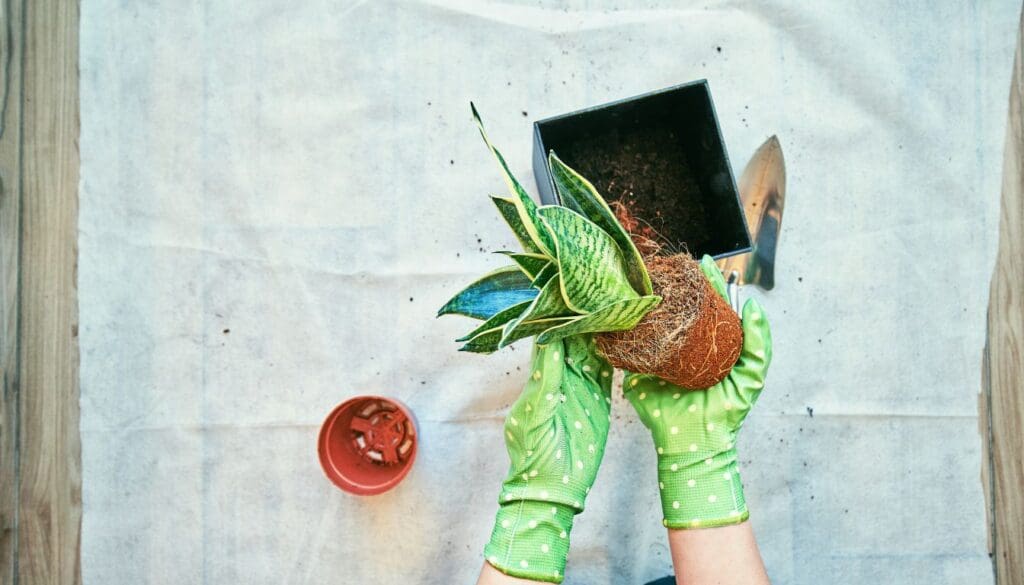
I used to think repotting all the time would make my snake plant grow faster. But snake plants actually like being a bit cramped.
Too much repotting stresses the roots and slows things down. When I moved mine to bigger pots too often, it got droopy and took forever to adjust.
Snake plants only need repotting every 2-3 years, or when roots poke out of the drainage holes. If the leaves look healthy and upright, I just leave it be.
It’s best to repot in spring or early summer. The plant bounces back better during the growing season.
If the soil dries out too fast, roots circle the pot, or leaves push up, it’s time to consider repotting. Otherwise, I let my snake plant chill in its current pot.
Trying to “help” by giving it more space just caused more issues for me. Now I wait for clear signs before touching the pot. That keeps my snake plant stress-free.
Understanding Snake Plant Care Basics
Snake plants are easy to grow, but they still need the right amount of light and water to stay healthy. Knowing what to watch for helps me spot problems early and fix them before my plant gets worse.
How Light and Water Impact Growth
I always keep my snake plant in bright, indirect sunlight. Direct sun can scorch its leaves, while low light slows growth and fades color.
If I see the leaves losing their healthy green, I move the plant closer to a window. Watering mistakes are a classic problem, too.
I let the soil dry out completely before watering again. Too much water causes root rot, which is probably the worst thing for snake plants.
I check the soil by sticking my finger in about an inch deep. If it’s dry, it’s time to water—simple as that.
Here’s a quick table I use:
| Light Needs | Watering Needs |
|---|---|
| Bright, indirect sunlight | When top inch of soil is dry |
| Will tolerate low light | Less frequent in winter |
Signs Your Snake Plant Needs Attention

It’s important for me to check my plant often. Yellow leaves usually mean I’m watering too much.
Droopy or mushy leaves? That’s often a sign of root rot. Brown edges might mean I’m not watering enough, or maybe the air’s just too dry.
I also watch for faded or pale coloring. That’s my cue my snake plant probably needs more light.
Small brown spots or slow growth? Those tell me my plant’s stressed, and I need to double-check my care routine.
Setting Up the Ideal Environment
I’ve learned that making the right setup choices can help my snake plant thrive. Picking the right soil and pot is key—getting this wrong can quickly lead to root rot or sluggish growth.
Choosing the Best Potting Mix
When I buy new soil, I always check that it’s well-draining. Heavy garden soil or mixes that hold water too long are just asking for trouble.
I look for a mix made for succulents or cacti. They’ve usually got the right blend of sand, perlite, and peat moss, so water moves through easily and roots don’t stay soggy.
Here’s what I like to see in a potting mix:
- Looseness: Roots need to breathe, after all.
- Drainage: Soggy soil is a no-go.
- Ingredients: Perlite, coarse sand, and not much organic matter.
If I can’t find a succulent mix, I’ll mix regular potting soil with sand or perlite myself. That way, I know my plant’s getting the air it needs.
Proper Pot and Drainage Selection
I always pick pots with drainage holes at the bottom. Without them, water just sits at the roots—never good news.
For my snake plants, I prefer terra cotta pots. They let extra moisture evaporate since they’re porous, which is pretty handy if I go a bit overboard with watering.
Plastic pots hold moisture longer, which can be risky. If I use one, I’m extra careful not to water too much.
Tip: Always dump out any extra water from saucers under the pot. It adds up fast.
A summary table I follow:
| Pot Type | Drainage Holes | Moisture Level |
|---|---|---|
| Terra cotta | Yes | Dries quickly |
| Ceramic (glazed) | Yes | Medium dry |
| Plastic | Yes | Stays moist |
Frequently Asked Questions
I get a lot of questions about caring for snake plants. Light, water, soil, and temperature all make a big difference in keeping my plant healthy.
Are you overwatering your snake plant?
Overwatering is the most common mistake I can make. When I water too often, the roots rot and the leaves get soft.
I only water my snake plant when the top two inches of soil are dry. For me, that’s usually every 2–3 weeks, depending on how warm and humid my place is.
What’s the ideal light exposure for your snake plant?
My snake plant does best in bright, indirect sunlight. Direct sun for too long can burn the leaf tips—been there, done that.
If my plant sits in a dark corner for weeks, it’ll grow more slowly and lose its nice, bright color.
How often should you repot your snake plant friend?
I repot my snake plant every 2–3 years or when I see roots poking out the bottom. Snake plants like to be a little snug in their pots, but not jammed in there.
Could you be choosing the wrong soil for your snake plant?
I always pick well-draining soil, like a cactus or succulent mix. Heavy soil holds onto water and can make the roots rot.
If the soil still feels soggy days after watering, I know it’s time to switch to something lighter.
What temperature is best for a snake plant’s growth?
My snake plant grows best between 65°F and 85°F (18°C–29°C). Cold drafts below 50°F (10°C) really slow it down, so I try to keep it away from chilly windows or heaters.
Why are the leaves of your snake plant turning yellow?
Yellow leaves on my snake plant? Nine times out of ten, I’m just watering it too much. Other times, it could be pests or maybe the soil’s just too soggy for its liking.
If I spot yellowing, I’ll poke around at the roots to see if there’s any rot. I also glance at the leaves for bugs or weird sticky patches—never know what you’ll find.
Recommended Garden Supplies
| Product Image | Our Recommended Gardening Supplies | Check Offers! |
|---|---|---|
Top Top
Top
Top
Top
Top
Top
Top
Top | rePotme Houseplant and Tropical Classic Potting Soil Mix | Check Offer On Amazon |
 Top
Top
Top
Top
Top
Top
Top
Top | Espoma Organic Indoor Plant Food | Check Offer On Amazon |
 Top
Top
Top
Top
Top
Top
Top
Top | GooingTop LED Grow Light 6000K Full Spectrum Clip Plant Growing Lamp | Check Offer On Amazon |
 Top
Top
Top
Top
Top
Top
Top
Top | Soil Moisture Meter | Check Offer On Amazon |
 Top
Top
Top
Top
Top
Top
Top
Top | Govee Hygrometer Thermometer, Bluetooth Enabled! | Check Offer On Amazon |
 Top
Top | LEVOIT Humidifiers for Large Room(Best For Plants) | Check Offer On Amazon |
 Top
Top
Top
Top
Top
Top
Top
Top | Upgraded DIY Automatic Drip Irrigation Kit, 15 Potted Houseplants Support | Check Offer On Amazon |
 Top
Top
Top
Top
Top
Top
Top
Top | Stainless Steel Heavy Duty Gardening Tool Set | Check Offer On Amazon |
 Top
Top
Top
Top
Top
Top
Top
Top | Bonide Insecticidal Soap | Check Offer On Amazon |
 Top
Top
Top
Top
Top
Top
Top
Top | Bonide 32 oz Spray Neem Oil for Organic Gardening | Check Offer On Amazon |
 Top
Top
Top
Top
Top
Top
Top
Top | Garden Safe Fungicide | Check Offer On Amazon |

